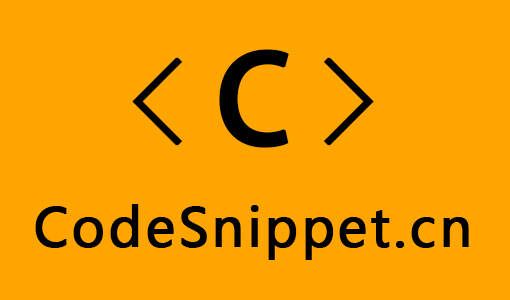CodeSnippet.Cn
代码片段
Csharp
架构设计
.NetCore
西班牙语
kubernetes
MySql
Redis
Algorithm
Other
Ubuntu
Linux
.NetMvc
VisualStudio
Python
Git
pm
WPF
java
Plug-In
分布式
CSS
微服务架构
JavaScript
DataStructure
Shared
理解ASP.NET Core - 中间件(Middleware)
0
.NetCore
小笨蛋
发布于:2022年08月31日
更新于:2022年08月31日
155
#custom-toc-container
### 中间件 先借用微软官方文档的一张图:  可以看到,中间件实际上是一种配置在HTTP请求管道中,用来处理请求和响应的组件。它可以: - 决定是否将请求传递到管道中的下一个中间件 - 可以在管道中的下一个中间件处理之前和之后进行操作 此外,中间件的注册是有顺序的,书写代码时一定要注意! ### 中间件管道 #### Run 该方法为HTTP请求管道添加一个中间件,并标识该中间件为管道**终点**,称为终端中间件。也就是说,该中间件就是管道的末尾,在该中间件之后注册的中间件将永远都不会被执行。所以,该方法一般只会书写在Configure方法末尾。 ```csharp public class Startup { public void Configure(IApplicationBuilder app) { app.Run(async context => { await context.Response.WriteAsync("Hello, World!"); }); } } ``` #### Use 通过该方法快捷的注册一个匿名的中间件 ```csharp public class Startup { public void Configure(IApplicationBuilder app) { app.Use(async (context, next) => { // 下一个中间件处理之前的操作 Console.WriteLine("Use Begin"); await next(); // 下一个中间件处理完成后的操作 Console.WriteLine("Use End"); }); } } ``` **注意:** 1. 如果要将请求发送到管道中的下一个中间件,一定要记得调用next.Invoke / next(),否则会导致管道短路,后续的中间件将不会被执行 2. 在中间件中,如果已经开始给客户端发送Response,请千万不要调用next.Invoke / next(),也不要对Response进行任何更改,否则,将抛出异常。 3. 可以通过context.Response.HasStarted来判断响应是否已开始。 以下都是错误的代码写法 - 错误1: ```csharp public class Startup { public void Configure(IApplicationBuilder app) { app.Use(async (context, next) => { await context.Response.WriteAsync("Use"); await next(); }); app.Run(context => { // 由于上方的中间件已经开始 Response,此处更改 Response Header 会抛出异常 context.Response.Headers.Add("test", "test"); return Task.CompletedTask; }); } } ``` - 错误2: ```csharp public class Startup { public void Configure(IApplicationBuilder app) { app.Use(async (context, next) => { await context.Response.WriteAsync("Use"); // 即使没有调用 next.Invoke / next(),也不能在 Response 开始后对 Response 进行更改 context.Response.Headers.Add("test", "test"); }); } } ``` #### UseWhen 通过该方法针对不同的逻辑条件创建管道分支。需要注意的是: - 进入了管道分支后,如果管道分支不存在管道短路或终端中间件,则会再次返回到主管道。 - 当使用PathString时,路径必须以“/”开头,且允许只有一个'/'字符 - 支持嵌套,即UseWhen中嵌套UseWhen等 - 支持同时匹配多个段,如 /get/user ```csharp public class Startup { public void Configure(IApplicationBuilder app) { // /get 或 /get/xxx 都会进入该管道分支 app.UseWhen(context => context.Request.Path.StartsWithSegments("/get"), app => { app.Use(async (context, next) => { Console.WriteLine("UseWhen:Use"); await next(); }); }); app.Use(async (context, next) => { Console.WriteLine("Use"); await next(); }); app.Run(async context => { Console.WriteLine("Run"); await context.Response.WriteAsync("Hello World!"); }); } } ``` 当访问 /get 时,输出如下: ```csharp UseWhen:Use Use Run ``` > 如果你发现输出了两遍,别慌,看看是不是浏览器发送了两次请求,分别是 /get 和 /favicon.ico #### Map 通过该方法针对不同的请求路径创建管道分支。需要注意的是: - 一旦进入了管道分支,则不会再回到主管道。 - 使用该方法时,会将匹配的路径从HttpRequest.Path 中删除,并将其追加到HttpRequest.PathBase中。 - 路径必须以“/”开头,且不能只有一个'/'字符 - 支持嵌套,即Map中嵌套Map、MapWhen(接下来会讲)等 - 支持同时匹配多个段,如 /post/user ```csharp public class Startup { public void Configure(IApplicationBuilder app) { // 访问 /get 时会进入该管道分支 // 访问 /get/xxx 时会进入该管道分支 app.Map("/get", app => { app.Use(async (context, next) => { Console.WriteLine("Map get: Use"); Console.WriteLine($"Request Path: {context.Request.Path}"); Console.WriteLine($"Request PathBase: {context.Request.PathBase}"); await next(); }); app.Run(async context => { Console.WriteLine("Map get: Run"); await context.Response.WriteAsync("Hello World!"); }); }); // 访问 /post/user 时会进入该管道分支 // 访问 /post/user/xxx 时会进入该管道分支 app.Map("/post/user", app => { // 访问 /post/user/student 时会进入该管道分支 // 访问 /post/user/student/1 时会进入该管道分支 app.Map("/student", app => { app.Run(async context => { Console.WriteLine("Map /post/user/student: Run"); Console.WriteLine($"Request Path: {context.Request.Path}"); Console.WriteLine($"Request PathBase: {context.Request.PathBase}"); await context.Response.WriteAsync("Hello World!"); }); }); app.Use(async (context, next) => { Console.WriteLine("Map post/user: Use"); Console.WriteLine($"Request Path: {context.Request.Path}"); Console.WriteLine($"Request PathBase: {context.Request.PathBase}"); await next(); }); app.Run(async context => { Console.WriteLine("Map post/user: Run"); await context.Response.WriteAsync("Hello World!"); }); }); } } ``` 当你访问 /get/user 时,输出如下: ```csharp Map get: Use Request Path: /user Request PathBase: /get Map get: Run ``` 当你访问 /post/user/student/1 时,输出如下: ```csharp Map /post/user/student: Run Request Path: /1 Request PathBase: /post/user/student ``` 其他情况交给你自己去尝试啦! #### MapWhen 与Map类似,只不过MapWhen不是基于路径,而是基于逻辑条件创建管道分支。注意事项如下: - 一旦进入了管道分支,则不会再回到主管道。 - 当使用PathString时,路径必须以“/”开头,且允许只有一个'/'字符 - HttpRequest.Path和HttpRequest.PathBase不会像Map那样进行特别处理 - 支持嵌套,即MapWhen中嵌套MapWhen、Map等 - 支持同时匹配多个段,如 /get/user ```csharp public class Startup { public void Configure(IApplicationBuilder app) { // /get 或 /get/xxx 都会进入该管道分支 app.MapWhen(context => context.Request.Path.StartsWithSegments("/get"), app => { app.MapWhen(context => context.Request.Path.ToString().Contains("user"), app => { app.Use(async (context, next) => { Console.WriteLine("MapWhen get user: Use"); await next(); }); }); app.Use(async (context, next) => { Console.WriteLine("MapWhen get: Use"); await next(); }); app.Run(async context => { Console.WriteLine("MapWhen get: Run"); await context.Response.WriteAsync("Hello World!"); }); }); } } ``` 当你访问 /get/user 时,输出如下: `MapWhen get user: Use` 可以看到,即使该管道分支没有终端中间件,也不会回到主管道。 #### Run & Use & UseWhen & Map & MapWhen 一下子接触了4个命名相似的、与中间件管道有关的API,不知道你有没有晕倒,没关系,我来帮大家总结一下: - Run用于注册终端中间件,Use用来注册匿名中间件,UseWhen、Map、MapWhen用于创建管道分支。 - UseWhen进入管道分支后,如果管道分支中不存在短路或终端中间件,则会返回到主管道。Map和MapWhen进入管道分支后,无论如何,都不会再返回到主管道。 - UseWhen和MapWhen基于逻辑条件来创建管道分支,而Map基于请求路径来创建管道分支,且会对HttpRequest.Path和HttpRequest.PathBase进行处理。 ### 编写中间件并激活 上面已经提到过的Run和Use就不再赘述了。 #### 基于约定的中间件 “约定大于配置”,先来个约法三章: 1. 拥有公共(public)构造函数,且该构造函数至少包含一个类型为RequestDelegate的参数 2. 拥有名为Invoke或InvokeAsync的公共(public)方法,必须包含一个类型为HttpContext的方法参数,且该参数必须位于第一个参数的位置,另外该方法必须返回Task类型。 3. 构造函数中的其他参数可以通过依赖注入(DI)填充,也可以通过UseMiddleware传参进行填充。 - 通过DI填充时,只能接收 Transient 和 Singleton 的DI参数。这是由于中间件是在应用启动时构造的(而不是按请求构造),所以当出现 Scoped 参数时,构造函数内的DI参数生命周期与其他不共享,如果想要共享,则必须将Scoped DI参数添加到Invoke/InvokeAsync来进行使用。 - 通过UseMiddleware传参时,构造函数内的DI参数和非DI参数顺序没有要求,传入UseMiddleware内的参数顺序也没有要求,但是我建议将非DI参数放到前面,DI参数放到后面。(这一块感觉微软做的好牛皮) 4. Invoke/InvokeAsync的其他参数也能够通过依赖注入(DI)填充,可以接收 Transient、Scoped 和 Singleton 的DI参数。 一个简单的中间件如下: ```csharp public class MyMiddleware { // 用于调用管道中的下一个中间件 private readonly RequestDelegate _next; public MyMiddleware( RequestDelegate next, ITransientService transientService, ISingletonService singletonService) { _next = next; } public async Task InvokeAsync( HttpContext context, ITransientService transientService, IScopedService scopedService, ISingletonService singletonService) { // 下一个中间件处理之前的操作 Console.WriteLine("MyMiddleware Begin"); Console.WriteLine("Www.CodeSnippet.cn"); await _next(context); // 下一个中间件处理完成后的操作 Console.WriteLine("MyMiddleware End"); } } ``` 然后,你可以通过UseMiddleware方法将其添加到管道中 ```csharp public class Startup { public void Configure(IApplicationBuilder app) { app.UseMiddleware<MyMiddleware>(); } } ``` 不过,一般不推荐直接使用UseMiddleware,而是将其封装到扩展方法中 ```csharp ublic static class AppMiddlewareApplicationBuilderExtensions { public static IApplicationBuilder UseMy(this IApplicationBuilder app) => app.UseMiddleware<MyMiddleware>(); } public class Startup { public void Configure(IApplicationBuilder app) { app.UseMy(); } } ``` #### 基于工厂的中间件 优势: - 按照请求进行激活。这个就是说,上面基于约定的中间件实例是单例的,但是基于工厂的中间件,可以在依赖注入时设置中间件实例的生命周期。 - 使中间件强类型化(因为其实现了接口IMiddleware) 该方式的实现基于IMiddlewareFactory和IMiddleware。先来看一下接口定义: ```csharp public interface IMiddlewareFactory { IMiddleware? Create(Type middlewareType); void Release(IMiddleware middleware); } public interface IMiddleware { Task InvokeAsync(HttpContext context, RequestDelegate next); } ``` 你有没有想过当我们调用UseMiddleware时,它是如何工作的呢?事实上,UseMiddleware扩展方法会先检查中间件是否实现了IMiddleware接口。 如果实现了,则使用容器中注册的IMiddlewareFactory实例来解析该IMiddleware的实例(这下你知道为什么称为“基于工厂的中间件”了吧)。如果没实现,那么就使用基于约定的中间件逻辑来激活中间件。 注意,**基于工厂的中间件,在应用的服务容器中一般注册为 Scoped 或 Transient 服务。** 这样的话,咱们就可以放心的将 Scoped 服务注入到中间件的构造函数中了。 接下来,咱们就来实现一个基于工厂的中间件: ```csharp public class YourMiddleware : IMiddleware { public async Task InvokeAsync(HttpContext context, RequestDelegate next) { // 下一个中间件处理之前的操作 Console.WriteLine("YourMiddleware Begin"); Console.WriteLine("Www.Codesnippet.cn"); await next(context); // 下一个中间件处理完成后的操作 Console.WriteLine("YourMiddleware End"); } } public static class AppMiddlewareApplicationBuilderExtensions { public static IApplicationBuilder UseYour(this IApplicationBuilder app) => app.UseMiddleware<YourMiddleware>(); } ``` 然后,在ConfigureServices中添加中间件依赖注入 ```csharp public class Startup { public void ConfigureServices(IServiceCollection services) { services.AddTransient<YourMiddleware>(); } } ``` 最后,在Configure中使用中间件 ```csharp public class Startup { public void Configure(IApplicationBuilder app) { app.UseYour(); } } ``` 微软提供了IMiddlewareFactory的默认实现: ```csharp public class MiddlewareFactory : IMiddlewareFactory { // The default middleware factory is just an IServiceProvider proxy. // This should be registered as a scoped service so that the middleware instances // don't end up being singletons. // 默认的中间件工厂仅仅是一个 IServiceProvider 的代理 // 该工厂应该注册为 Scoped 服务,这样中间件实例就不会成为单例 private readonly IServiceProvider _serviceProvider; public MiddlewareFactory(IServiceProvider serviceProvider) { _serviceProvider = serviceProvider; } public IMiddleware? Create(Type middlewareType) { return _serviceProvider.GetRequiredService(middlewareType) as IMiddleware; } public void Release(IMiddleware middleware) { // The container owns the lifetime of the service // DI容器来管理服务的生命周期 } } ``` 可以看到,该工厂使用过DI容器来解析出服务实例的。因此,当使用基于工厂的中间件时,是无法通过UseMiddleware向中间件的构造函数传参的。 #### 基于约定的中间件 VS 基于工厂的中间件 - 基于约定的中间件实例都是 Singleton;而基于工厂的中间件实例可以是 Singleton、Scoped 和 Transient(当然,不建议注册为 Singleton) - 基于约定的中间件实例构造函数中可以通过依赖注入传参,也可以用过UseMiddleware传参;而基于工厂的中间件只能通过依赖注入传参 - 基于约定的中间件实例可以在Invoke/InvokeAsync中添加更多的依赖注入参数;而基于工厂的中间件只能按照IMiddleware的接口定义进行实现。
这里⇓感觉得写点什么,要不显得有点空,但还没想好写什么...
返回顶部
About
京ICP备13038605号
© 代码片段 2025